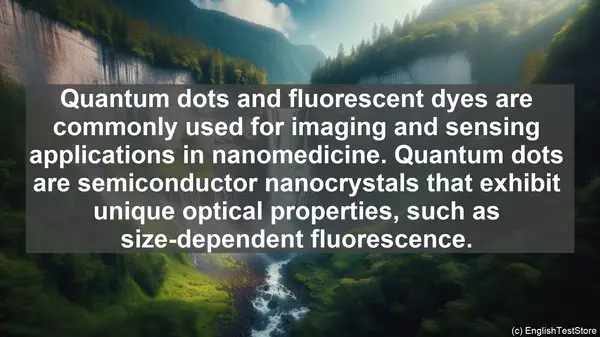Introduction
Welcome to our nanomedicine class. Today, we’ll be discussing a topic that often leads to confusion – words. In the vast field of nanomedicine, there are several words that sound similar but have different meanings. Understanding these distinctions is crucial for clear communication and accurate research. So, let’s dive into the top 10 commonly confused words in nanomedicine.
1. Nanoparticle vs. Nanomaterial
Nanoparticles and nanomaterials are often used interchangeably, but they have distinct definitions. A nanoparticle refers to a tiny particle with dimensions in the nanoscale range. On the other hand, a nanomaterial is a broader term that encompasses any material with nanoscale dimensions. While all nanoparticles are nanomaterials, not all nanomaterials are nanoparticles.
2. Drug Delivery vs. Drug Targeting
Both drug delivery and drug targeting are crucial aspects of nanomedicine. Drug delivery refers to the process of transporting a drug to its intended site of action. On the other hand, drug targeting involves directing the drug specifically to a particular site, such as a tumor. While drug delivery focuses on efficient transport, drug targeting emphasizes precision.
3. Bioavailability vs. Biodistribution
Bioavailability and biodistribution are terms often encountered in nanomedicine research. Bioavailability refers to the fraction of a drug that reaches the systemic circulation and is available for action. Biodistribution, on the other hand, describes how a drug is distributed throughout the body after administration. While bioavailability is concerned with the overall availability, biodistribution looks at the specific locations where the drug accumulates.
4. Toxicity vs. Biocompatibility
When working with nanomaterials, assessing their impact on living systems is crucial. Toxicity refers to the harmful effects a substance may have, while biocompatibility refers to its compatibility with living systems. While a material may be toxic, it can still be biocompatible if its effects are within acceptable limits. Understanding these terms is essential for ensuring the safety of nanomedicine applications.
5. In vitro vs. In vivo
In nanomedicine research, experiments are often conducted both in vitro and in vivo. In vitro refers to studies conducted in a controlled laboratory environment, typically using cells or tissues outside of a living organism. In vivo, on the other hand, refers to experiments conducted within a living organism. Both types of studies are essential for a comprehensive understanding of a nanomaterial’s properties and effects.
6. Efficacy vs. Effectiveness
When evaluating the performance of a drug or treatment, efficacy and effectiveness are two important measures. Efficacy refers to how well a treatment works under ideal conditions, such as in a clinical trial. Effectiveness, on the other hand, looks at the real-world impact of the treatment, considering factors such as patient compliance and variability. While a treatment may be highly efficacious, its real-world effectiveness may vary.
7. Surface Area vs. Surface Area-to-Volume Ratio
In nanomedicine, the surface area of a nanomaterial plays a crucial role. A larger surface area allows for more interactions with the surrounding environment. However, it’s also important to consider the surface area-to-volume ratio. As the size of a nanomaterial decreases, its surface area-to-volume ratio increases, leading to unique properties and potential applications.

8. Self-Assembly vs. Self-Organization
Self-assembly and self-organization are fascinating phenomena in nanoscience. Self-assembly refers to the spontaneous arrangement of components into an ordered structure. On the other hand, self-organization describes the emergence of patterns or structures without external direction. Both processes are essential for the design and fabrication of nanoscale materials and devices.

9. Quantum Dots vs. Fluorescent Dyes
Quantum dots and fluorescent dyes are commonly used for imaging and sensing applications in nanomedicine. Quantum dots are semiconductor nanocrystals that exhibit unique optical properties, such as size-dependent fluorescence. Fluorescent dyes, on the other hand, are organic molecules that absorb and emit light. While both have their advantages, quantum dots often offer superior brightness and photostability.
10. Bottom-Up vs. Top-Down Synthesis
In nanomaterial synthesis, two common approaches are bottom-up and top-down. Bottom-up synthesis involves building a material from smaller components, such as atoms or molecules. On the other hand, top-down synthesis starts with a larger material and gradually reduces its size. Both methods have their advantages and are suitable for different applications, depending on factors such as scalability and control over properties.
